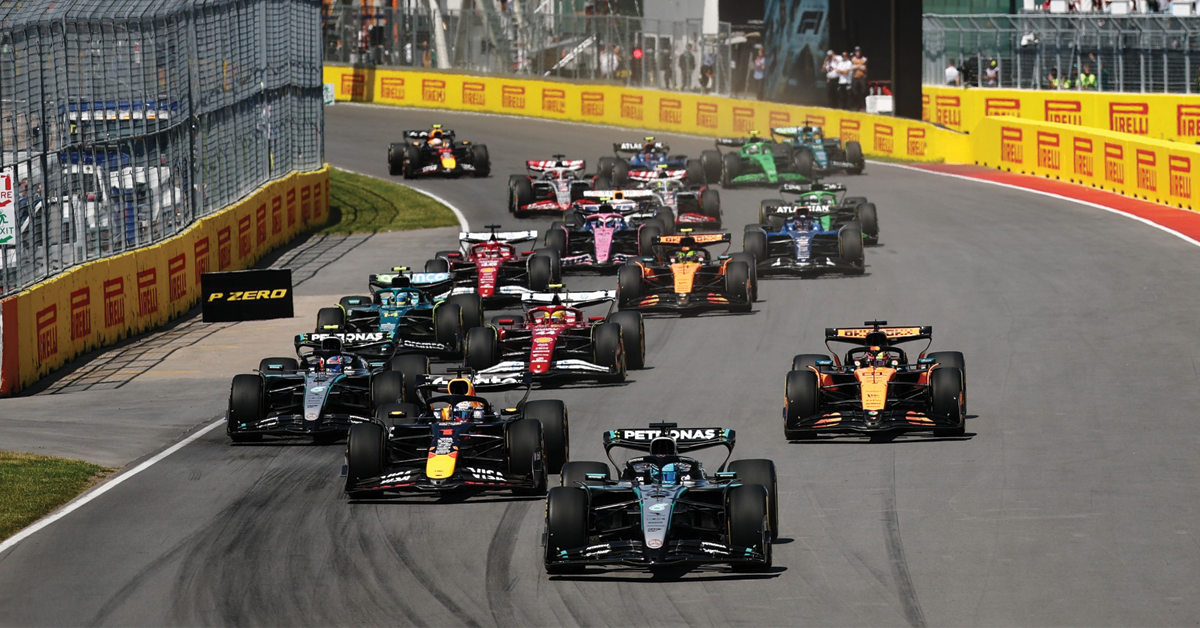Come next season, the world of Formula 1 will witness one of its most significant shake-ups in recent history. The 2026 regulations will move the sport away from the ‘ground effect’ era and make way for a generation of lighter, more responsive cars.
This overhaul is framed as an active effort to make the sport more competitive, with sustainability as another major selling point. While the regulations signal clear intentions towards a greener future, the new shake-up might not be as environmentally friendly as it is portrayed to be.
The paradox behind the FIA’s 2026 regulations
The premise is simple: the new generation of Formula 1 cars will burn less fuel and rely more on energy recovered through their hybrid power systems. This is done through the MGU-K, which captures wasted kinetic energy under braking and transforms it into reusable power.
Currently, the MGU-K delivers around 120kw, while the internal combustion engine (ICE) produces between 500-560kw. Under the 2026 regulations, the MGU-K’s output will triple to 350kw, while the ICE output will drop to 400kw. That is almost a 50/50 split between the systems.
Manual Override, Active Aerodynamics and More – How the 2026 Regulations Will Change Formula 1
Less burned fuel and more reusable energy sounds like a step in the right direction until it’s put into perspective. Alas, electrical power units are not inherently green.
Producing electrical batteries is an energy- and resource-intensive process. The primary materials – lithium, copper, cobalt, and nickel – are expensive to mine and damaging to the environment. Not to mention that there’s a significant negative carbon footprint left behind.
Lithium, for example, can be mined in Chile’s Salar de Atacama – one of the driest regions on Earth – yet the process consumes an exorbitant amount of the area’s limited water supply. A controversy in motion.
The 2026 regulations aim high, but the reality is complex, and the bigger picture needs to be considered. Ultimately, ambition should also align with reality.
A more sustainable alternative
A path worth considering, counter to the direction of the 2026 regulations, is to shift the focus back to the Internal Combustion Engine. Running the Formula 1 cars entirely on sustainable fuel.
Unlike electric batteries, sustainable fuel can be made synthetically or from renewable sources. This approach already sidesteps the water-intensive and environmentally damaging processes tied to battery production.
Mercedes’ long-term partnership with Petronas is a prime example of how sustainable fuel can save tonnes of carbon emissions. The Brackley-based team, in its quest to become the most sustainable professional sports team, has managed to save over 500 tonnes of CO2 emissions. Using HVO100, a second-generation biofuel.
We also have Aramco’s 100% sustainable biofuel powering the F3 cars with no loss to the power output, and in fact increasing the power output.
That said, sustainable fuels have their own drawbacks, requiring significant energy input. If mismanaged, producing 100% green fuel can also deplete water and land resources. Still, it’s a simpler, greener alternative to the hybrid power system imposed by the FIA in the 2026 regulations.
Every solution carries trade-offs. Perhaps, a joint initiative between the FIA and power unit supplying teams like Mercedes and Ferrari could pave the way for greener opportunities. In the end, it’s about finding the balance.












